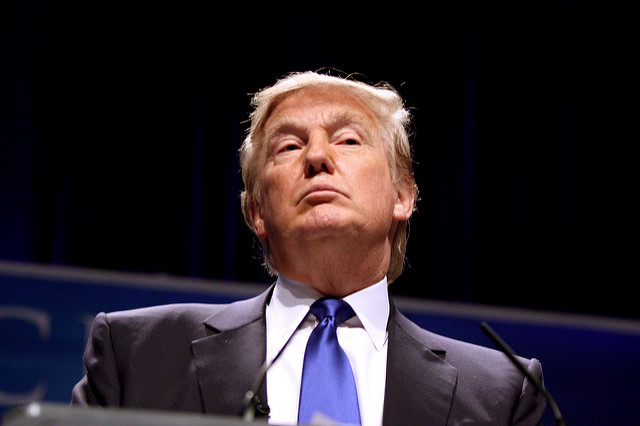President-elect Trump has plans to roll back many of President Obama’s marquee orders and laws, most notably the healthcare law and various regulations.
But in 2015, Obama went on a spree of retirement policy-related executive actions. The moves, some more controversial than others, made that year one of the most productive ever in terms retirement policy.
Over at the Brookings Institute, William G. Gale and Joshua Gotbaum write about Obama’s legacy as it relates to retirement policy:
Taken as a whole, the Administration’s actions undertaken in 2015 are likelier to have a positive effect on retirement security than anything that any administration or the Congress has done in many years.
Payroll Savings are Key to Retirement Security. By far the greatest success in saving for retirement occurs when saving is done automatically by deducting funds from a paycheck and having them invested automatically in a professional retirement program. However, under Federal law, such programs are entirely voluntary and employers that provide them must meet the many legal fiduciary, disclosure, and eligibility requirements of the Employee Retirement Income Security Act (ERISA) and the Internal Revenue Code. As a result, most employers, especially small businesses with fewer employees, decline to provide these programs.
Auto-IRA: Gridlocked in Washington, Unlocked in the States. In 2008, both major presidential candidates endorsed a proposal [2] by J Mark Iwry (then of Brookings) and David John (then of the Heritage Foundation) to require those small businesses without a plan automatically to enroll their employees in an Individual Retirement Account.
California and other states stepped in and proposed “Secure Choice” programs: a requirement that employers without a plan automatically enroll their employees (who could opt out at any time) into a professionally-managed retirement program, probably an IRA, that would be established by a state board. Legislation establishing such state boards to study and/or implement programs was enacted by California, Illinois, and Oregon.
DOL Allows Businesses to Encourage Retirement Saving without Full Federal Regulation. In July [4], the President announced that DOL would issue regulations and guidance to advance state savings plans. In November, DOL did so, publishing a proposal [5] under which state-sponsored IRA programs would exempt employers from ERISA fiduciary and other requirements.
DOL is doing more than just “legalizing” the IRA model that Illinois has legislated and other states are considering. They have also published a bulletin [6] outlining the ways they are willing to modify traditional ERISA requirements in order to facilitate state-sponsored pension and 401k-type plans. This would significantly increase and improve the options available for states to consider.
Adoption by states of an auto-enrollment requirement would extend coverage to an estimated 50-70 million working Americans who currently have no private retirement savings. It would be the largest expansion of retirement savings in more than 50 years.
Reducing Conflicts in the Marketing of Retirement Plans. After a false start in 2010, this year DOL proposed new regulations intended to limit the “conflict of interest” effects of commissions in biasing the advising and marketing of retirement products. DOL and others had shown that the presence of product commissions led financial advisors to favor the higher-commission retirement options. One survey by the Council of Economic Advisors estimated that biased compensation arrangements might result in extra fees on the order of $17 billion annually. [7]
DOL proposed that all advisors either forego product commissions in favor of asset-based or per-session compensation or that they enter into a legally-enforceable “Best Interests Contract” that both disclosed all fee arrangements and committed the advisor to placing client interests first. Although DOL’s proposal did not go as far as actions taken in the UK and elsewhere – which banned product commissions entirely—it has nonetheless generated substantial controversy. Many financial service firms and advisors argued that the DOL action is unnecessary, that it would reduce the supply of retirement advice, and/or that potential conflicts can be handled through existing industry self-regulation and by the Securities and Exchange Commission. (The SEC had been directed by Congress to provide guidance in 2010, but five years later had failed to reach any agreement.) Various Brookings scholars have studied these issues. Martin Baily and Sarah Holmes, reviewing the academic literature, concluded that conflicted advice is significant and that the approach proposed by DOL could, on net, benefit the country if it incorporated modifications to preserve investor education efforts and to reduce the likelihood that investors would avoid getting any advice at all. [8]
Offering a Federal Private Retirement Savings Option. Frustrated by Congressional unwillingness to legislate the Auto-IRA, the President announced in 2014 that Treasury would set up a voluntary retirement savings plan, My Retirement Account (“MyRA”) allowing voluntary payroll deductions to purchase a special Federal bond “to help millions of Americans save for retirement” [9]. Since the Administration had no authority to require employers to auto-enroll their employees in MyRA and there has not been significant willingness of employers to do so voluntarily, this year the Treasury announced that individuals would be permitted to join MyRA and make automatic contributions directly from their bank accounts. Nonetheless, there’s little evidence that this will lead to significant additional savings.
Limiting Employers’ Ability to Cash Out their Pension Obligations via Lump Sum Payments. ERISA’s intention was to preserve traditional defined benefit (DB) pension plans and ensure that pension commitments, when made, were honored. Ironically, the response by most employers has been instead to limit their DB obligations; DB plans now cover only a small minority of private sector workers and many current DB plan sponsors are “de-risking” either by freezing their plans and purchasing annuities to replace them, or by offering to cash out individual pension obligations via lump sum payment. Unfortunately, the passage of the Pension Protection Act of 2006 accelerated “de-risking” activity.
Read the entire article here.
